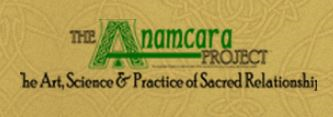
The Anamcara tradition originated in Celtic spirituality, centered in Ireland, Scotland, and Wales. I love the diversity of the Celts, rich with influences from India, Africa, and the Middle East. Celtic spirituality merged the pre-Christian pagan world with that of the Druids and Christians and included astronomers, mathematicians, doctors, midwives, mystics, and healers.
Like most major spiritual traditions around the world, the Celts believe nature has a divine essence. Believers would take nature quests in search of healing or spiritual guidance. Many people steeped in the tradition still use the Four Elements Blessing from the Anamcara Morning Devotional Practice, honoring fire, water, air and earth.
Celtic priests were called Ceili De or companions/spouses of God. Some Ceili De were called Anamcara or soul friends, serving as healers and spiritual mentors. The most famous Anamcara is Brigid, who lived 15 centuries ago. In Ireland and Scotland, reverence to Brigid (also Brigit or Briged) is second only to Mary. Although she was born about 450AD, legend has her at the birth of Christ, watching over Mary. For this reason, she is called the foster mother of Christ.
The Celts celebrate Brigit’s festival on February 1, when the first signs of spring appear, signifying rebirth in the earth and our souls. It is also the time when the daylight begins to be noticeably longer. Spring brings the light of inspiration, and Brigit is said to carry light all over the world today.
The Celts have many names for Brigit, such as Brigit of the shorelines, because she presides over the threshold places, spaces between spaces, or between the earthly world and the spiritual. Brigit has a magical quality, and one of Brigit’s many legends include her being seen in two places at the same time.
According to early manuscripts, the king of Leinster granted the Curragh, a plain in Kildare, to Brigid where she founded the first nunnery in Ireland. The community became a double abbey for monks and nuns, with the abbess ranking above the abbot (britannica.com/biography/Saint-Brigit-of-Ireland).
As an Anamcara, Brigit was renowned for her ability to heal. Anamcara established Europe’s first healthcare or hospices. Their motto was “Healing is always possible, even when curing is not.” Brigit believed everyone needs an Anamcara, noting “A person without an Anamcara is like a body without a head.” She taught that one’s Anamcara is with them throughout their life, even if their Anamcara died before them.
Dating back more than 15 centuries, the Anamcara tradition has much to offer us today. Modern roles for Anamcara include the following:
- Hospice Chaplains, who attend to the spiritual needs of the dying regardless of their religious affiliation.
- Death Doulas, who offer calm and comfort the terminally ill, coordinate care, help with legacy projects to memorialize the life of the dying, provide respite care for family members, plan memorials, and sit with dying person as they make their transition. You can learn more at Dying In Grace.
- Spiritual Directors, who support anyone wishing to deepen their relationship with the Divine, offering listening and spiritual tools, and practices that invite the person to go within.
I completed my Anamcara training in June and received certification as a Spiritual Director. To learn more about my training and services, reach out to me directly or visit spiritual coaching.